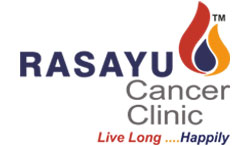A Study of Venous Thromboembolism After Cancer Surgery
Venous thromboembolism (VTE) is a common complication in patients after any surgery. Cancer surgery raises by at least twice the risk of postoperative deep vein thrombosis (DVT) and more than 3 times the risk of fatal pulmonary embolism (PE) compared to surgery in non-cancer patients. The risk for thromboembolic complications in cancer surgery may have considerably reduced over the years as the surgery procedure has undergone numerous changes. Improvements in surgical techniques has facilitated the ease of the procedure, more prompt mobilization, improved use of prophylaxis, and advances in perioperative care.
However, it has emboldened more extensive procedures in older and sicker patients. The preoperative chemotherapy – radiotherapy have also raised the risk of VTE in patients undergoing cancer surgery.
Briefer hospital stays for surgery besides extended duration of prophylaxis could influence the time course of the occurrence of thromboembolism. Most of the data has been obtained from studies that had their observation confined to the first 7 to 10 post-op days and very little in the long term.
The aim of the study was to evaluate the incidence of clinically evident VTE in patients undergoing cancer surgery and to identify potential risk factors for VTE. Patients were assessed for clinically evident VTE occurring after 30 + days from surgery or more in the case of longer stays in the hospitals.
The study has shown that the incidence of venous thromboembolism after cancer surgery is significant. The risk of VTE persists beyond the conventional period of antithrombotic prophylaxis.

The study has proven the potential for clinical approach and future research. The persistently high incidence of VTE after cancer surgery, despite improvements in patient care, needs to be further studied. The incidence of VTE remains high despite prophylaxis, hence requiring further improvement, particularly in patients with known risk factors.
The high incidence of late occurrence suggests the need to extend the antithrombotic prophylaxis beyond hospital discharge and/or the conventional perioperative period.
Rasayu Cancer Clinic’s View
The incidence is in line with the irritation caused by the medicines used in the procedure. The extent of resection of the affected organ can also be considered a factor for DVT. The DVT needs the focus of treatment to the blood consistency rather than any other factor and it is more vital for the patient than the cancer treatment if it is so diagnosed.



